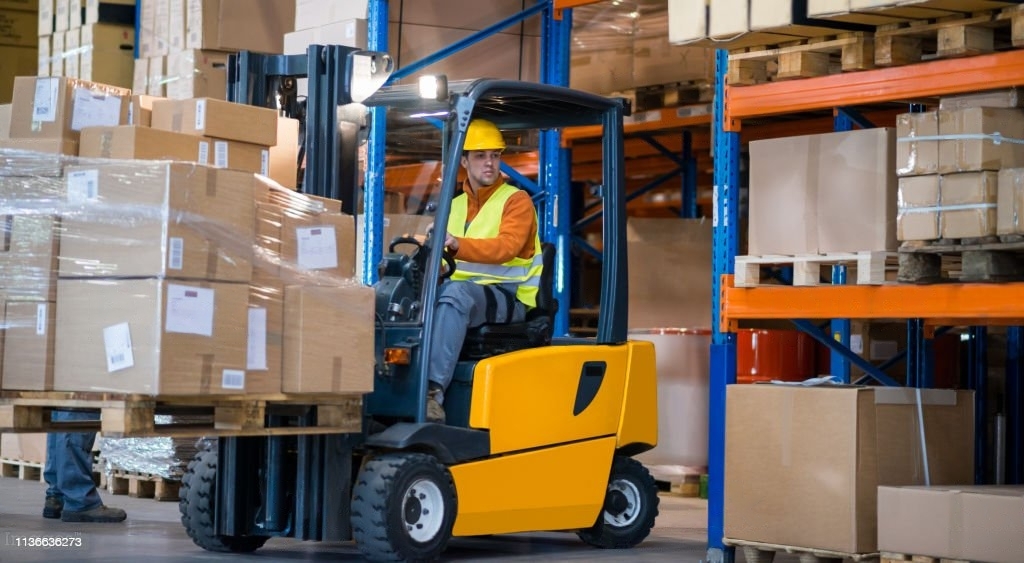
Warehouse operations rely heavily on forklifts to move goods efficiently and safely. However, without proper training, forklifts can pose significant risks to both workers and inventory. In this blog, we’ll delve into the best practices for warehouse forklift training, covering essential aspects such as load handling, aisle navigation, inventory management, and emergency procedures. By implementing these practices, businesses can enhance efficiency while prioritizing the safety of their workforce.
Importance of Forklift Training:
Forklifts are indispensable tools in warehouse operations, but they also present inherent dangers if mishandled. According to the Occupational Safety and Health Administration (OSHA), forklift accidents result in about 61,800 non-serious injuries, 34,900 serious injuries, and 85 fatalities annually in the United States alone. These alarming statistics underscore the critical need for comprehensive forklift training programs.
Load Handling Techniques:
Proper load handling is essential to prevent accidents and minimize product damage. Research by the National Institute for Occupational Safety and Health (NIOSH) reveals that 70% of forklift accidents can be attributed to inadequate training or improper operation. Training programs should emphasize load stability, weight distribution, and safe lifting practices to reduce the risk of tip-overs and collisions.
Aisle Navigation and Spatial Awareness:
Navigating narrow aisles and congested warehouse spaces requires skill and spatial awareness. A study published in the International Journal of Industrial Ergonomics found that 25% of forklift accidents occur due to collisions with objects or structures. Forklift operators must be trained to maintain clear sightlines, observe speed limits, and use mirrors effectively to avoid obstacles and pedestrians.
Inventory Management Protocols:
Efficient inventory management is crucial for optimizing warehouse operations. Forklift operators should be trained to accurately identify and handle different types of inventory, including fragile or hazardous materials. Research from the Material Handling Institute (MHI) indicates that 65% of warehouse professionals consider inventory accuracy a top priority, highlighting the importance of forklift training in minimizing errors and discrepancies.
Emergency Procedures and Risk Mitigation:
Despite precautionary measures, emergencies can still occur in warehouse environments. Forklift training programs should include comprehensive instruction on emergency procedures, such as responding to fires, spills, or equipment malfunctions. The Bureau of Labor Statistics (BLS) reports that 42% of forklift-related fatalities are caused by vehicle overturns, emphasizing the need for operators to be trained in proper response protocols to mitigate risks.
Implementing Training Best Practices:
To ensure the effectiveness of forklift training, businesses should adhere to established best practices. This includes conducting thorough pre-employment assessments to evaluate candidates’ aptitude for operating forklifts safely. Additionally, ongoing training and refresher courses should be provided to existing operators to reinforce knowledge and address any gaps in skills or understanding.
Utilizing Technology for Training Enhancement:
Advancements in technology offer new opportunities to enhance forklift training programs. Virtual reality (VR) simulations, for example, provide a realistic and immersive learning experience for operators without exposing them to real-world risks. Research by the American Society of Safety Professionals (ASSP) suggests that VR training can improve retention rates by up to 75%, making it a valuable tool for reinforcing safety practices.
Safety should always be the top priority in warehouse environments, and proper training is the foundation for achieving it. As statistics on forklift-related accidents underscore the importance of comprehensive training programs, it’s imperative for employers to invest in ongoing education and utilize emerging technologies to enhance learning outcomes. By doing so, they can create a safer and more productive environment for their workforce.

